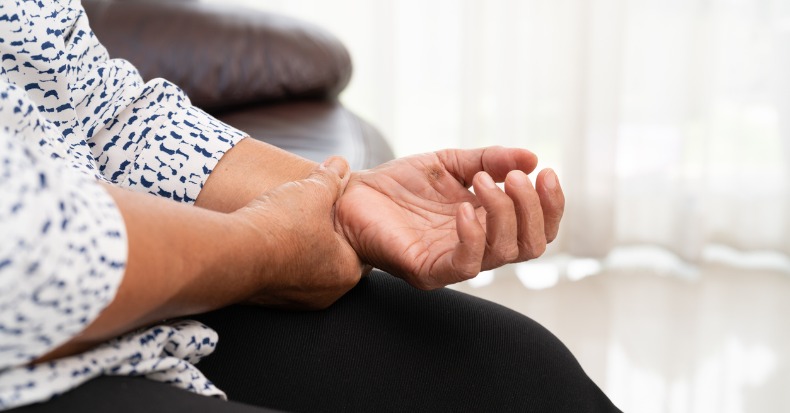Carpal Tunnel Syndrome (CTS) is a common condition that affects many people. The process by which it is diagnosed involves a careful history and examination that includes an orthopedic and neurological exam, special sensory tests (including vibrometry or neurometry), and sometimes special tests such as X-Ray, MRI, EMG/NCV. So, let’s discuss this process…
HISTORY: When you visit a chiropractic office for the first time, you will be asked to complete some routine paper work that includes history-based information such as the mechanism of injury (how did CTS start), the onset (when the symptoms started), pain-related issues (factors that increase or decrease the pain/symptoms), quality of symptoms (numb, tingling, achy, pins/needles), radiation of symptoms and location, severity (right now, on average past week, at best and at worst), timing of the symptoms (worse at night, in the morning, after certain work or home activities), and past history information. You will also be asked about your current health status such as heart disease, stroke, diabetes, thyroid disease, arthritis, and any other health-related conditions that may be present. The office will also do an inventory of your systems (cardiovascular-heart, pulmonary-lungs, and genito-urinary), skin, musculoskeletal (muscles, bones, and joints), and neurological systems. This is important as they can all contribute to CTS.
EXAMINATION: The routine exam for CTS patients includes a careful evaluation of not only the hand and wrist, but also all structure from the neck down the arm, including the shoulder and elbow. That’s because a pinch of the nerve at any location from the neck down can contribute to CTS symptoms and treatment at these locations is often needed for a satisfying result. Categories of examination include:
- Observation: This includes posture, skin color/texture, and quality of movement such as being slow or careful with or without pain behavior like grimacing or verbal expressions of pain.
- Palpation: Touching areas including the neck, shoulder, elbow, wrist, and hand. We are looking for pain responses, numbness/tingling, temperature & moisture of the skin, muscle tone, joint grinding, and others.
- Orthopedic tests: This will include testing for nerve pinching in the neck, shoulder, elbow, or wrist; attempts to reproduce symptoms in the hands by bending and holding the bent wrist positions for 10-30 seconds, tapping the wrists with a reflex hammer checking for numbness into digits thumb through the 4th finger; stretching the fingers backwards to see how “stiff” they are, comparing the two hands, and others.
- Neurological tests: Using various instruments that may include a sharp object (like a pin), a dull object, light touch, vibration produced by a tuning or neurometer or vibrometer, a reflex hammer to test the reflexes in the arm (several locations), and possibly a two-point discriminator which measures whether one can feel two points the same on the two sides or down to at least 6mm (1/4 inch). Testing muscle strength in the arms as well as grip strength is also commonly done.
- Special tests: These are less commonly performed but can include: blood tests (diabetes-sugar, thyroid, arthritis tests, Lymes Disease, others), EMG (electromyography), NCV (Nerve Conductance Velocity - these tests measure the speed at which a nerve transfers an impulse from point 1 to 2 such as neck to hand, elbow to wrist, across the wrist to the 2nd finger), X-Ray and/or MRI (Magnetic Resonant Imaging).
The bottom line: Make sure your healthcare provider is thorough and checks everything from the neck to the hand as often, conditions above the wrist frequently contribute to CTS symptoms.





